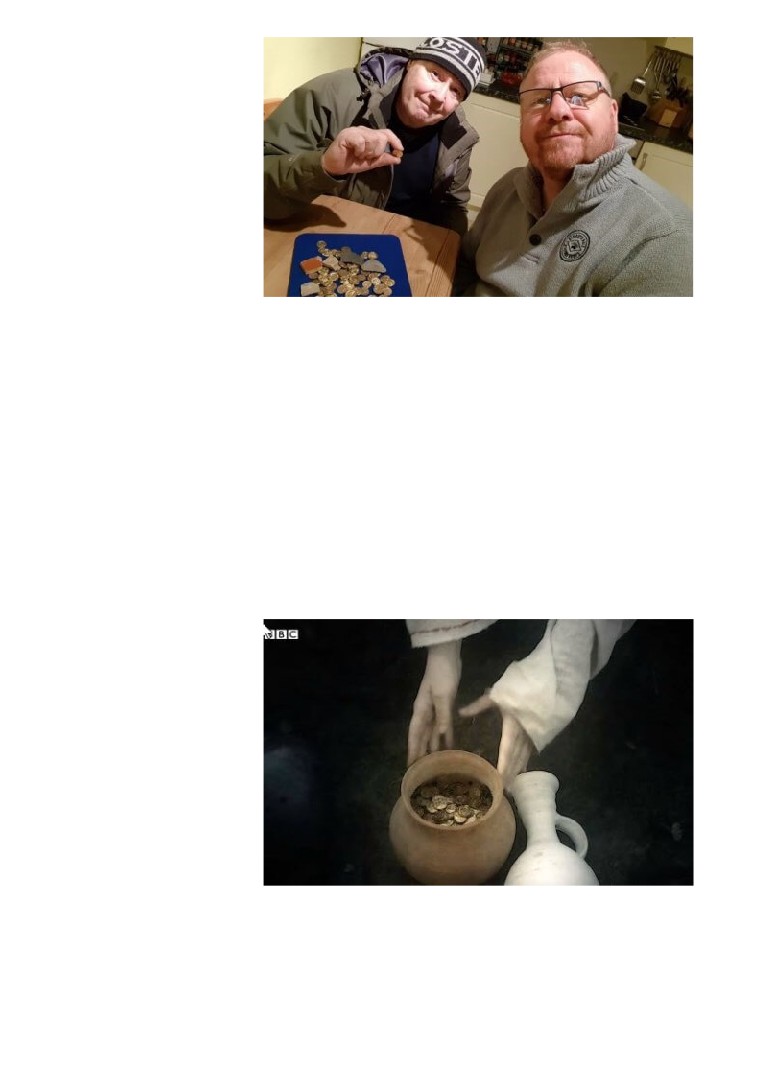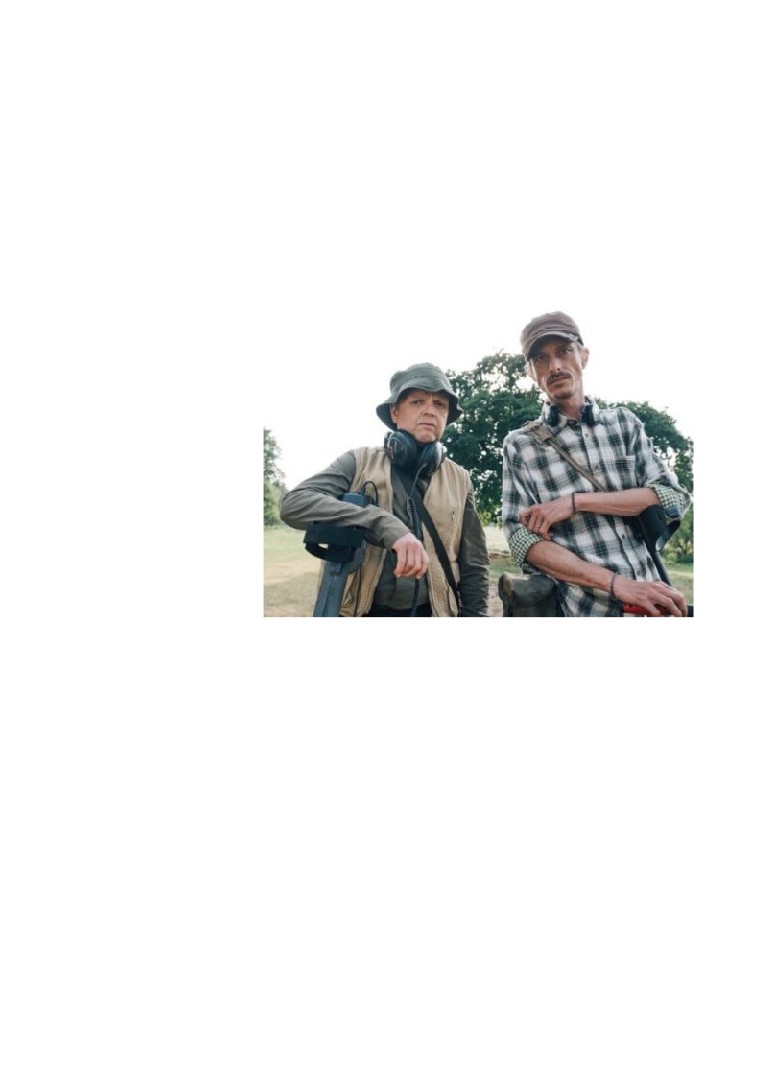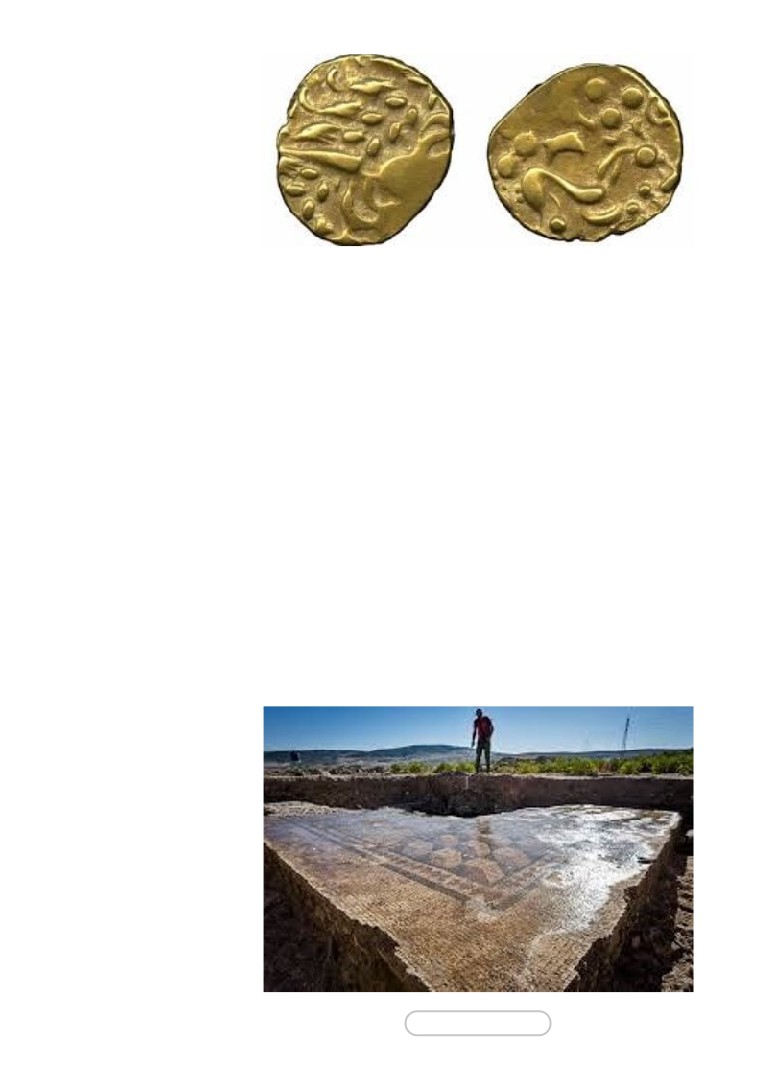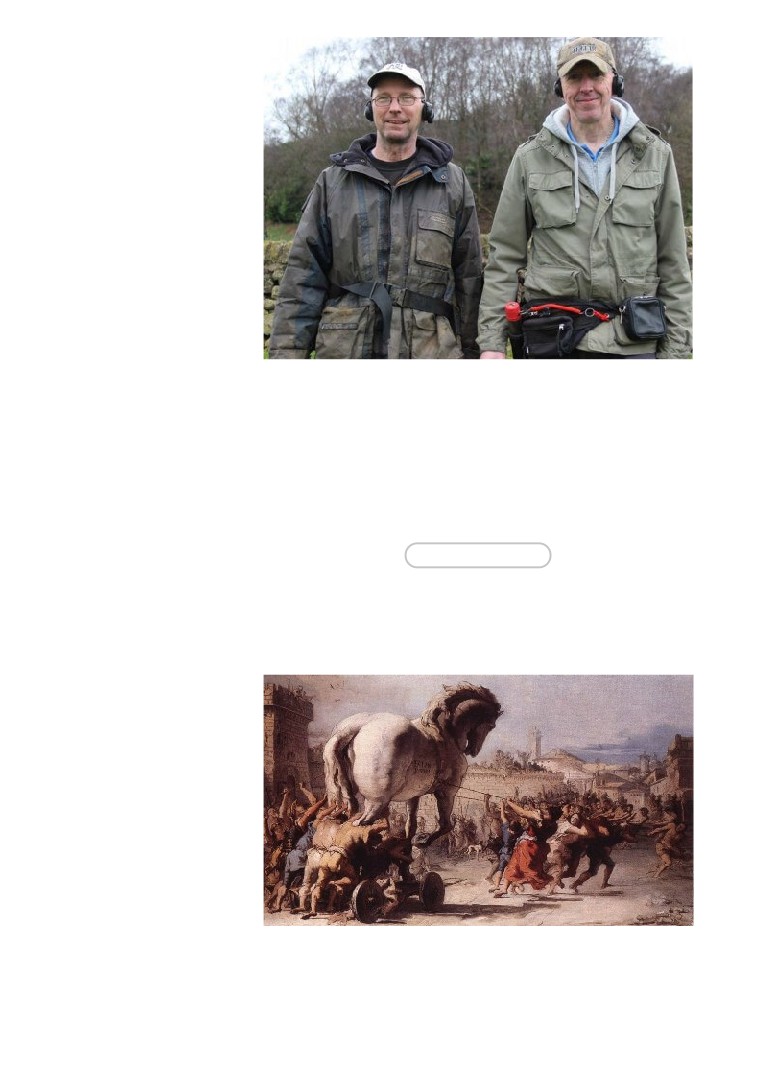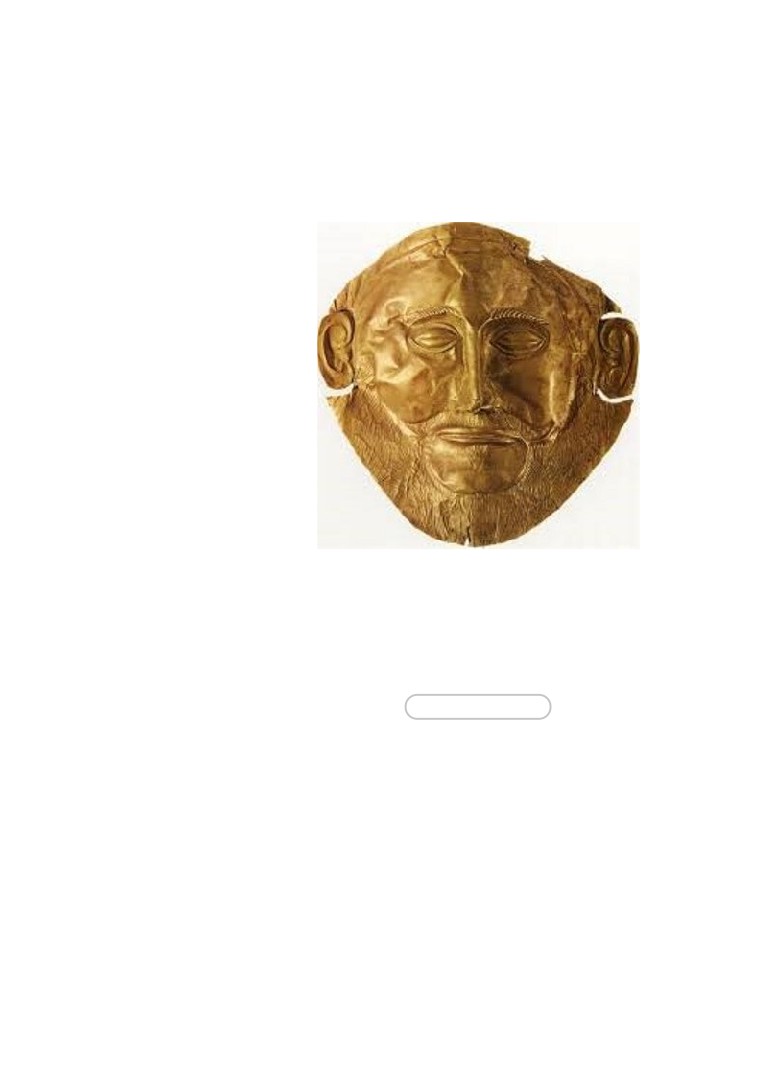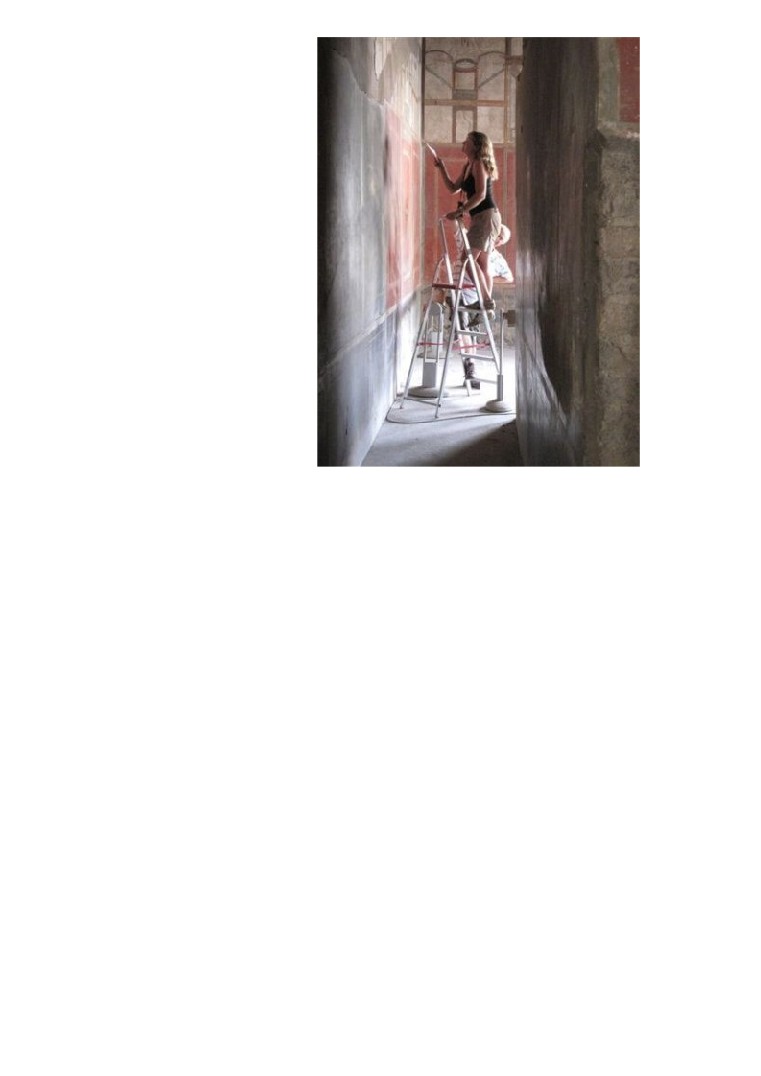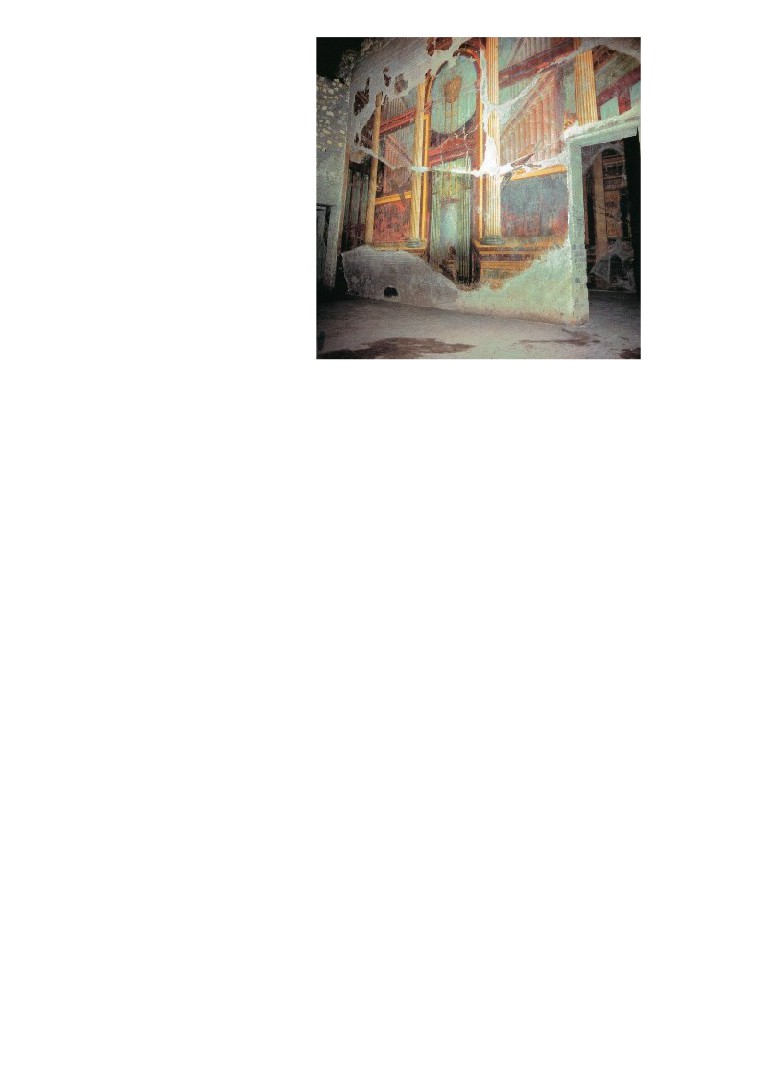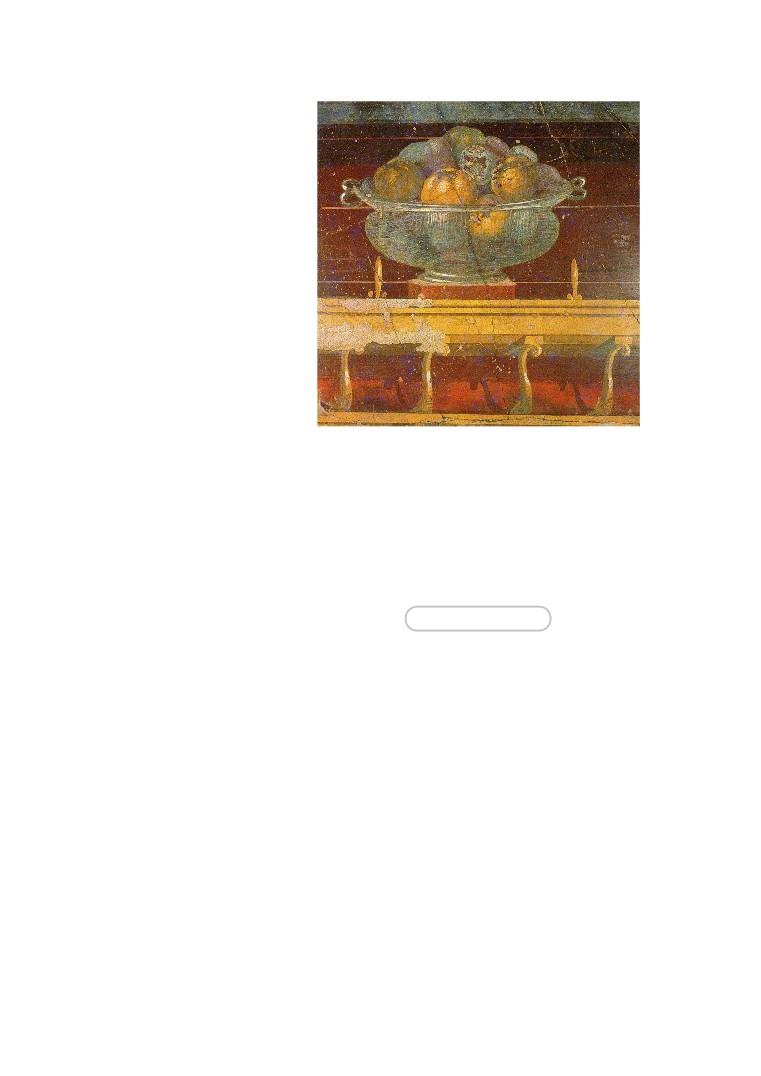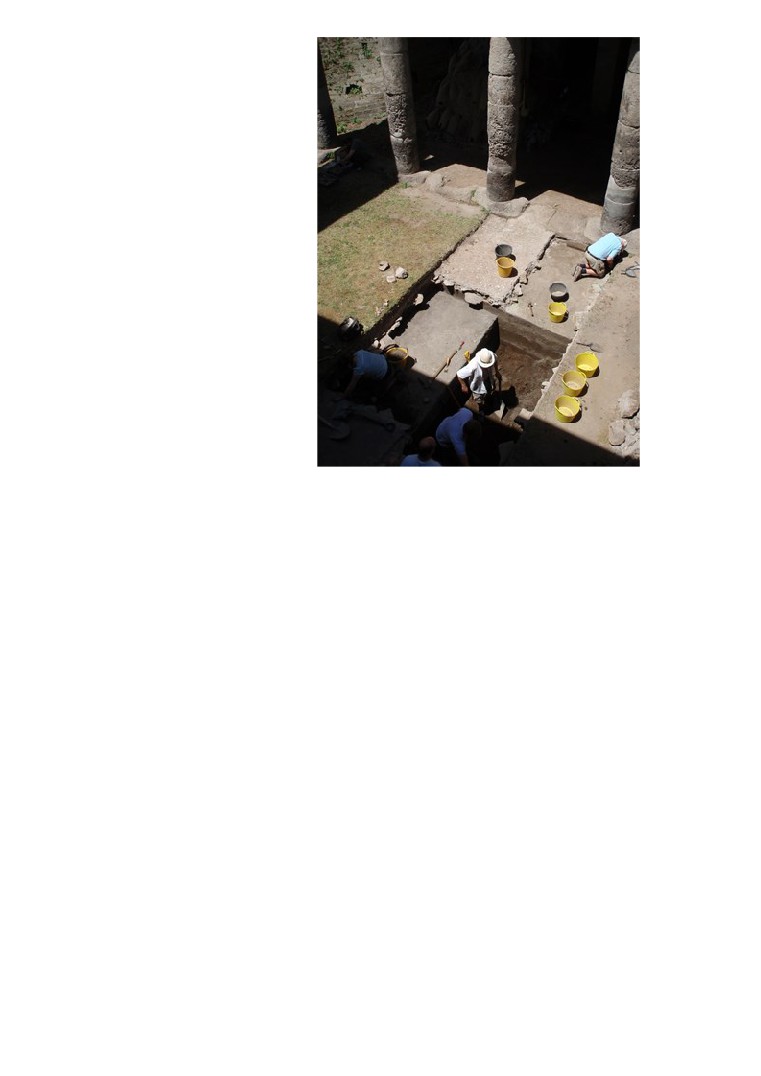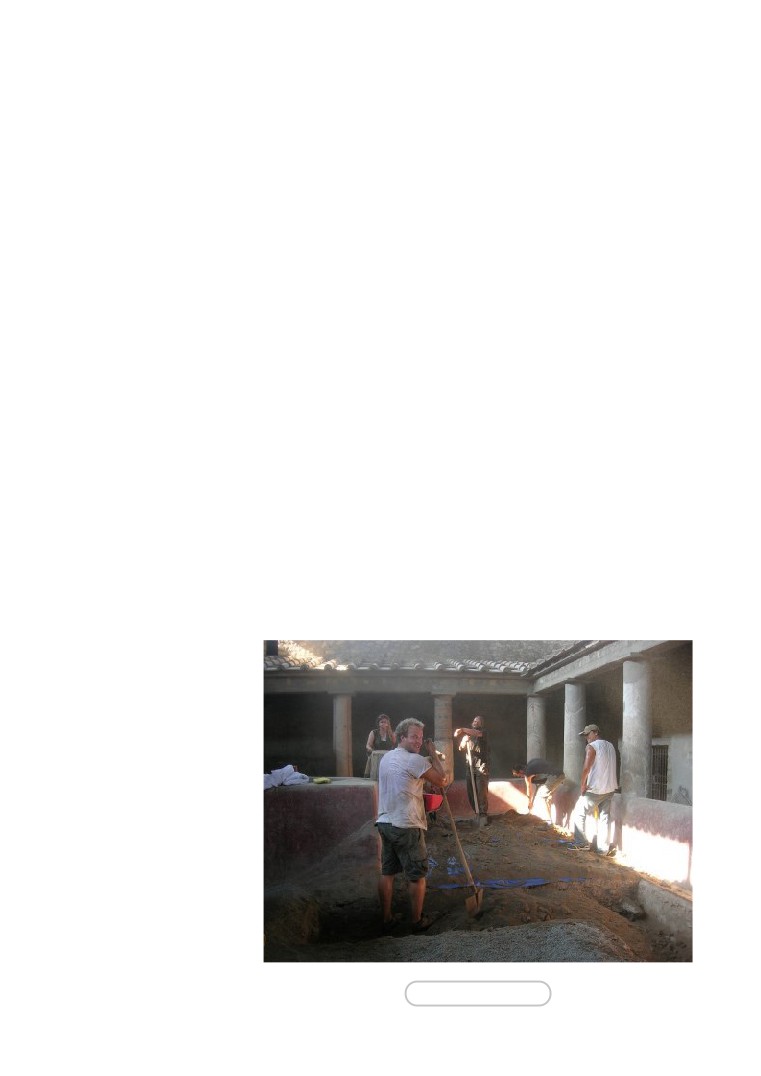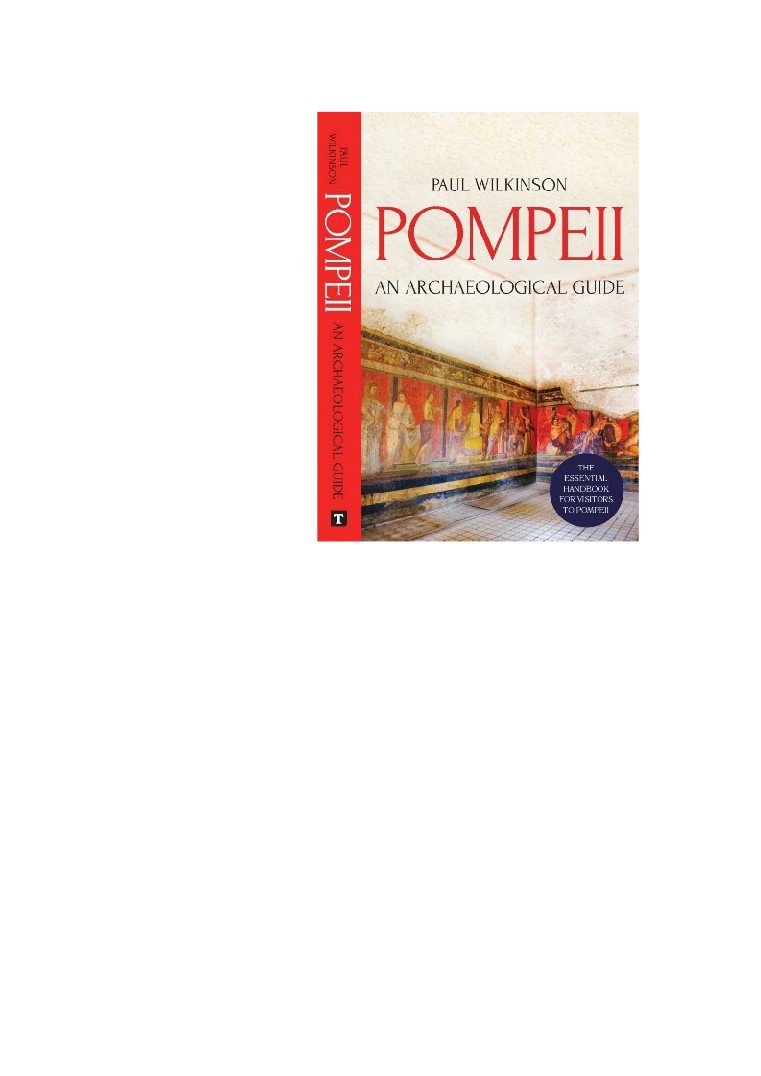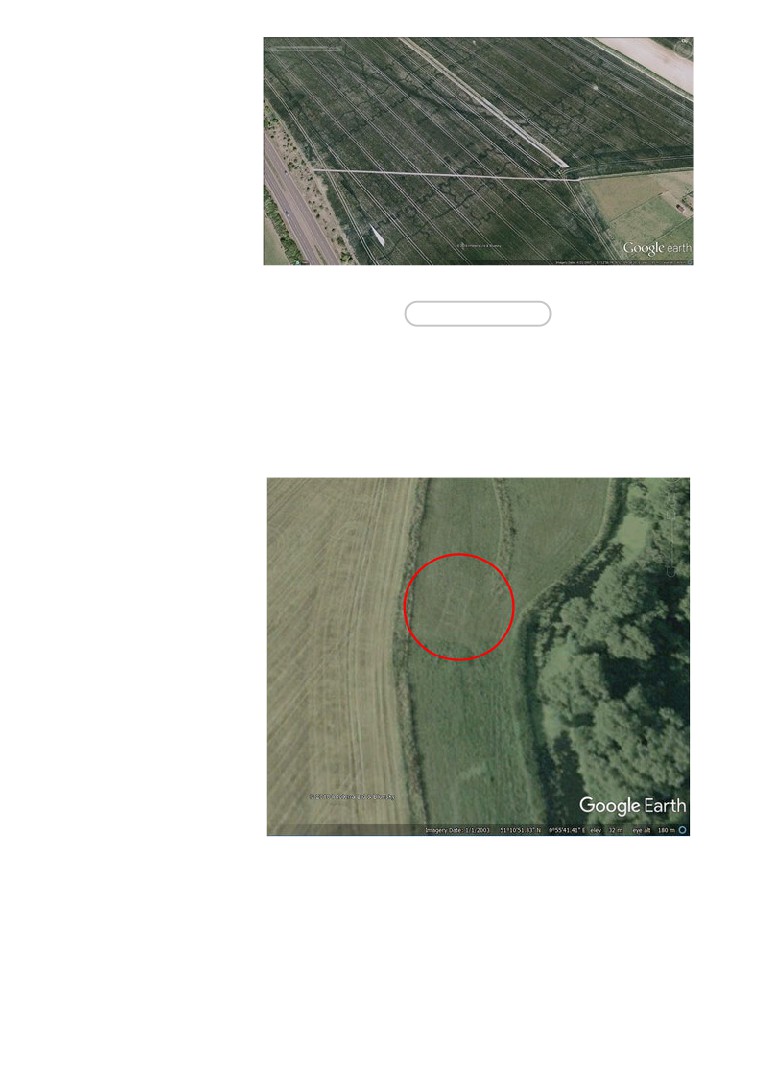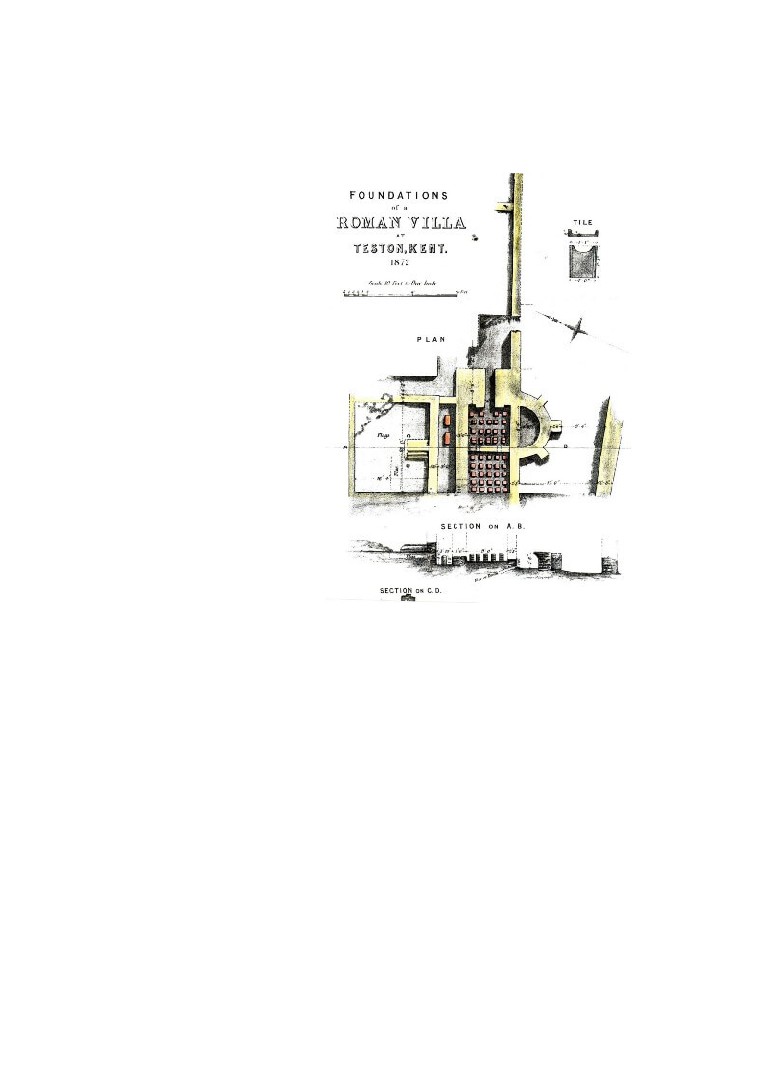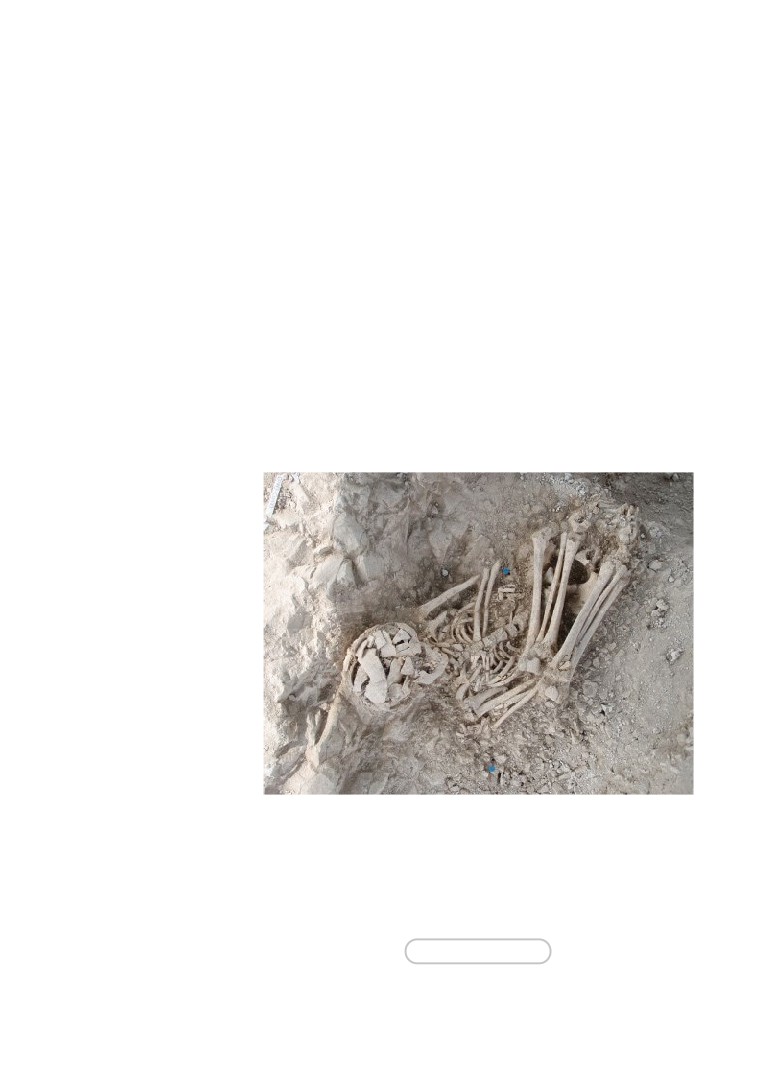Welcome to the Spring 2018 Newsletter from the Kent
WELCOME
Archaeological Field School
IT’S APRIL AND FOOLS
ABOUND!
UK’S IRON AGE BLING
WHO REALLY FOUND TROY
Dear Member, we will be sending a Newsletter
OPLONTIS EXCAVATION
OPPORTUNITIES
email each quarter to keep you up to date with
news and views on what is planned at the Kent
ARCHAEOLOGICAL WORK
Archaeological Field School and what is
POMPEII. AN
happening on the larger stage of archaeology
ARCHAEOLOGICAL GUIDE
both in this country and abroad. For more
AERIAL SURVEY OF KENT
COURSES FOR 2018
I do hope you enjoy this newsletter which looks
KAFS BOOKING FORM
forward to a summer of exciting
‘digging’
KAFS MEMBERSHIP FORM
opportunities. Paul Wilkinson.
Breaking News: It’s April and fools abound!
Patrick Sawyer writing in the Telegraph and footnote by Chris Catling writing in
Current Archaeology:
When metal detectorist Paul Adams stumbled on a hoard of gold coins he believed
his luck was finally in.
In all the weeks he had spent carefully scanning fields with his metal detector he
had never before found such a treasure.
With a little jig of delight and a cry of “Roman gold! Roman gold!” Mr Adams called
over his detecting partner Andy Sampson to feast his eyes on the trove, worth what
they estimated might be as much as £250,000.
Pretty soon they started planning how to spend the proceeds of their discovery.
But in what turned out to be a case of life imitating art imitating life, the 54 gold coins
were nothing more than props left behind by a film crew making the BBC comedy
series Detectorists starring Mackenzie Crook and Toby Jones as two hapless friends
dedicated to the search for buried treasure.
During filming of a scene from the first episode of the last series, the replica coins
were shown first being buried in a clay Roman pot (left) before being brought to the
surface by a tractor ploughing a field 2,000 years later.
Unfortunately for Mr Adams, 58, and Mr Samson, 54, when it came to clearing the
set the production company left behind some of the coins, raising the pair’s hopes
when they came across them a few weeks later.
"I think we are officially the world's unluckiest metal detectorists. Our story would
make a TV series of its own,” said Mr Sampson.
"After we found them I was paying off my mortgage and buying a sports car in my
head. We thought we were looking at the real McCoy. Now I look at them and want
to cry."
The pair, who work together delivering oxygen to medical patients, began
detectoring a year ago and had been given permission to sweep the field in Suffolk
where Andy had previously found a Roman coin. As they began searching an area
they could see had recently been ploughed Mr Adams’ machine started pinging.
"I heard Paul shout out 'yes!'” said Mr Sampson, from Ipswich. "I looked up to see
him dancing around. He came floating towards me screaming 'Roman gold, Roman
gold'.
"I ran over to him and was amazed when he showed me a small Roman gold coin in
the palm of his hand.
"We carried on looking and our metal detectors were working overtime, picking out
gold coin after gold coin along a 30ft long furrow.
"We couldn't believe our luck. There were shards of Roman pottery too, which made
sense because the Romans buried them in pots. Everything was as it should be.
"We sat there in total disbelief. I had my head in my hands at one point just because
of the sheer enormity of it all and the feeling of having found a gold hoard.
"We weren't sure how much they might be worth but we had six Emperor Nero coins
and we knew they were worth £26,500 each."
The pair, by their own admission “too excited to think straight”, went home and
planned to inform the landowner and relevant authorities the next day.
But before doing so they showed their find to a neighbour who has been a
detectorist for 40 years and is a member of the Suffolk Archaeological Survey Mr
Sampson said: "He couldn't believe his eyes when I poured them out on the table.
But as soon as he picked one up he said 'these are wrong, they're not real'."
The neighbour informed the pair the coins were in all likelihood fake, but Mr
Sampson refused to believe him, arguing there was no reason for 50 fake coins to
be placed a recently ploughed field.
However, when he told his wife Sam, who works in the estate office of the farm
where they were found, she recalled that the Detectorists had recently been filmed
there.
A call to the production company quickly established that they had put replica gold
coins in the ground for a scene.
Instead of a hoard worth tens of thousands the replicas turned out to be worth a
mere £5 each.
"When my wife told me about the Detectorists filming there an alarm bell went off in
my head,” said Mr Sampson. “She spoke to the location manager and he confirmed
they were props. We didn't know whether to laugh or cry. "
Mackenzie Crook, 46, who wrote, directed and starred in Detectorists, said he was
'horrified' to learn that the pair thought they had uncovered a Roman hoard.
The Bafta winner said the crew picked up as many replica coins as they could after
filming. He said he intended to go back to look for more but was beaten to it by the
duo.
Mr Crook said: "Unfortunately, that day we didn't have metal detectors with us and I
intended to go back to find any strays.
"But freshly ploughed fields are magnets to detectorists and the next day I was
horrified to hear that Paul and Andy had got there first and found what they thought
was a hoard.
"As a detectorist myself, I'd like to assure these gentlemen that I was gutted that I
might have contributed to their disappointment. I hope they continue searching and I
hope they find their real gold soon."
However, Christopher Catling writing in Current Archaeology says: ‘could Paul and
Andy living locally, not be aware that a film crew with all its paraphernalia spent
several weeks filming the TV series in that field, especially as (real life) Andy’s wife,
Sam, works in the estate office of the farm that owns the field- it was she who
‘recalled that Detectorists had recently been filmed there’ and spoke to the location
manager who confirmed the coins were props’. Not exactly fake news, but perhaps
a story concocted with much of an eye for entertainment as for strict veracity’.
Footnote by Christopher Catling writing in the recent edition of
Current Archaeology (Issue 338):
Professional Archaeology:
The Enemy
Until recently, the script [of the Detectorists] steered clear of the mutual suspicion
that exists between archaeologists and detectorists, but that serene balance was
upset by the third and last series, which has just been broadcast (so spoiler alert
ahead!). The gentle humour took a somewhat unexpected turn when nice, wise, and
thoughtful Andy - played by Mackenzie Crook, who also wrote the series - gave up
his job mowing verges for the Council to become a contracting archaeologist. His
first day on site, he uncovered the edge of a Romano-British mosaic and he
dreamed about it all night. The next day, when he turns up on site with JCBs
manoeuvring menacingly in the background, the mosaic cannot be found.
Was it just a dream? Where has it gone?
Andy turns to his site supervisor, portrayed as lazy, shifty, and devious: a soulless
man with a blank stare and machinelike speech, a man who prefers the warmth of
the site hut to real archaeology. He tells Andy with a shrug of the shoulders that 'it
had to go' because the archaeologists have to be off site at the end of the week.
Andy resigns his job on the spot, and, in that one short scene, professional
archaeologists are thus dismissed as mendacious and hypocritical individuals, in
league with those same developers who are destroying Andy's beloved countryside.
Sherds now finds his enthusiasm for the series dented, and it is difficult to
recommend it unreservedly; it needs a health warning. Distressingly there has been
no outcry from archaeologists. Imagine how outraged the detectorist community
would be if they were all portrayed as get rich- quick cowboys, only interested in the
monetary value of their finds, pillaging our common inheritance for personal gain.
BACK TO MENU
Breaking News/2:
UK’s Iron Age bling reported by Norman Hammond
writing in the London Times
It would have made Andy proud. The Iron Age gold jewellery found a year ago by
the real-life counterparts of BBC Four's Detectorists has been hailed as one of the
ten most important discoveries of 2017 by a leading American journal.
Noting that the three torcs — two necklaces and an armlet — and the two-strand
twisted bracelet dating from 400-250BC are so "remarkable", the Archaeological
Institute of America's Archaeology puts them alongside traces of Neanderthal DNA
in caves across Europe and the earliest Egyptian hieroglyphs as the notable finds of
the year.
For several hundred years previously, Britons "appear to have largely abandoned
wearing and manufacturing gold jewellery", the journal notes.
When iron supplanted bronze as the main metal for tools and weapons, the trade
networks that funnelled copper and tin across Europe broke down, and "communal
identity might have been more important than things which emphasise an
individual's power, like wearing loads of bling", says Julia Farley of the British
Museum.
The find, uncovered at Leekfrith in Staffordshire, was declared treasure at an
inquest in February, two days after the real detectorists. Joe Kania (left) and Mark
Hambleton (right). had found a missing piece of the smallest tore. The hoard was
valued at £325,000, and the Potteries Museum and Art Gallery in Hanley launched
an appeal to acquire it.
A second British site made it into Archaeology's 2018 top ten: the discovery that
inside the great megalithic stone circle at Avebury in Wiltshire there had once been
a square formation of stones. Mark Gillings of the
University of Leicester believes it to have commemorated the footprint of a Neolithic
house from as early as 3500BC, a millennium older than the stone circle, and that
the latter was built to enclose what was "an ancestral place that had slipped into
myth and legend".
At the recent end of the archaeological timescale, Archaeology includes in its
remarkable finds of 2018 the skeleton of a 15th-century Aztec wolf, sacrificed and
buried with gold adornments at the foot of the Great Temple of Tenochtitlan in
Mexico City.
There is also a 1911 Huntley & Palmers fruitcake, left in Antarctica's oldest building,
on Cape Adare, by Captain Scott's expedition on its way to the South Pole, and still
"in fine shape", but with "that slightly off smell of butter that's gone wrong", according
to Lizzie Meek of the Antarctic Heritage Trust.
BACK TO MENU
Breaking News/3: Who really found Troy?
Ben Macintyre of the London Times explains
Love, war, revenge, fire, gods, trickery, swords and sandals: the siege of Troy, the
greatest story ever told, and retold, is returning in a new eight-part television series
in the spring.
A British-made version of the great legend is an opportunity to correct a long-
running myth and give Britain credit where it is due: contrary to popular belief, the
remains of Troy were discovered not by the unscrupulous German adventurer who
has claimed credit for the past 140 years but a self effacing English gentleman-
scholar and a Scottish journalist.
Only slightly less dramatic than the story of Troy is the tale of who really found it, a
saga of Anglo- German conflict, multiple layers of skulduggery and a treasure trove
looted by Soviet soldiers at the end of the Second World War, now held in a Moscow
museum. By rights, part of the hoard should be in Britain.
Heinrich Schliemann was a self made, self-taught German magnate who made a
fortune selling ammunition to Russia during the Crimean War. Schliemann claimed
to be the first to correctly identify Hisarlik in western Turkey as the site of Troy,
where he uncovered a great trove of gold, silver and bronze artefacts in 1873.
He kept the public informed of his exciting discoveries with reports in The Times. He
also found a gold funeral mask and supposedly wrote, in a telegram to the King of
Greece: " I have looked upon the face of Agamemnon."
No, he hadn't. Some of Schliemann's claims were wrong and many were
deliberately misleading. The so-called Father of Mediterranean Archaeology was a
prodigious liar.
The first person to identify Hisarlik as the lost city of Troy, back in 1822, was Charles
MacLaren, a Scottish farmer's son who founded The Scotsman. Working from
literary clues left by Homer, MacLaren correctly pinpointed Hisarlik, a mound on a
strategic hilltop close to the Dardanelles, as the "city of heroes" described in The
Iliad.
That revelation was taken up by Frank Calvert, a shy, unmarried English consular
official and amateur archaeologist. He purchased a farm incorporating half of
Hisarlik Hill and in 1863 he started digging. The British Museum declined to help, so
he dug on alone.
Schliemann turned up seven years later, on an extended tour with a new Greek wife
30 years his junior. Calvert showed him around the site and effectively introduced
him to archaeology — about which he was, until that point, largely ignorant.
Schliemann noted "the rich collection of vases and other curious objects that the
ingenious and indefatigable archaeologist Frank Calvert has found". He also sensed
an opportunity for fame. The ambitious German then launched what was, at the
time, the biggest archaeological excavation ever undertaken.
Mobilising an army of 150 workers, whom he dosed with quinine to protect against
malaria and forced to work 13 hours a day, Schliemann tunnelled through layer
upon layer of history in search of Homeric Troy (the site contained at least nine
successive cities, built one on top of another) and by 1871 he had excavated an 18-
metre hole.
Schliemann then announced he had uncovered the treasures of King Priam, a
fabulous hoard of gold, jewellery, weaponry and vases.
In fact he had blasted through the Troy of Homer from the late Bronze Age to find
the artefacts of a civilisation at least 1,000 years older.
When Calvert made this point, the two men fell out dramatically.
Schliemann then smuggled his finds out of Turkey.
Later archaeologists have questioned not only the dating but also the provenance of
Schliemann's discoveries, amid suspicions that he may have "salted" the site with
objects found elsewhere. In 1876, at Mycenae, he found the Mask of Agamemnon,
now on display in Athens and described as the "Mona Lisa of prehistory". Modern
research, however, indicates that the mask predates the Trojan War by several
hundred years. It may even be a fake.
Ruthless in his self-promotion, Schliemann claimed all the glory and airbrushed
Calvert and MacLaren out of history, making it seem that he alone had found the
site, equipped only with a copy of The Iliad.
He unscrupulously rewrote his own life, depicting his discovery of Troy as the
crowning achievement of an ambition inspired by reading Homer as a boy, rather
than a chance meeting with a British official during a luxury holiday.
His Athens mausoleum bears the inscription "Schliemann the Hero".
The descendants of the Calvert family claim a portion of the Trojan treasures, since
some artefacts, including a collection of ceremonial axes, were found on their
family's land but not shared with Frank
Calvert. Schliemann presented his collection to the German government with great
fanfare. In the final days of the Second World War it was carted away from Berlin by
Stalin's "Trophy Brigades" as part of the systematic plunder of Germany. The axes
were thought to have been lost until they were put on display at the Pushkin
Museum in 1994 along with other pieces of 'Priam's Treasure".
The trove is claimed by Russia, Germany, Turkey and Greece. Calvert's heirs are
reportedly also planning legal action to get some of the treasure back.
The Mask of Agamemnon (above) which some experts have claimed is a fake
For centuries many believed that Troy was a myth, the product of an inspired poetic
imagination. Calvert proved it was genuine history.
The new BBC series, jointly produced with Netflix, will offer fresh homage to Homer
but it also enables us to recognise the forgotten victor in the hunt for the fabled city.
Calvert died in 1908, an unassuming British Indiana Jones and the real hero of Troy.
BACK TO MENU
Breaking News/4:
Oplontis excavation opportunities for the 30 lucky
archaeologists who gained places on what could be the last
dig at this iconic World Heritage site
The Oplontis Project began in 2006 with the study of the site known as Oplontis
situated at Torre Annunziata, Italy. The work is sponsored by the Center for the
Study of Ancient Italy at the University of Texas in Austin. Its two directors are John
R. Clarke and Michael L. Thomas. In addition the Kent Archaeological Field School,
Faversham, Kent UK under its director Dr Paul Wilkinson has been involved in
fieldwork at both villa sites since 2008.
The aims of the project are to enable an understanding of the two buildings, one of
which is Villa ‘A’, the other Villa ‘B’ to be enhanced through a comprehensive study
of the buildings, the fabric, the artefacts and human remains, their location, and their
function including a 3-d model (above) with interactive database which will enable
scholars to write a series of comprehensive volumes which will be published by the
Humanities eBook series of the American Council of Learned Societies. The first is
scheduled to appear in 2014.
Villa ‘A’ is now recognised as one of the most sumptuous and extravagant Roman
villas overlooking the Bay of Naples. It is thought by many that the villa was the
property of Poppaea Sabina the Younger who was born in Pompeii in AD30 and
married Nero in AD62. The evidence is somewhat circumstantial and consists of
graffiti found on an amphora which said ‘secundo poppaea’ which in translation
means ‘to the second [slave or freedman] of Poppaea’.
The villa was excavated by an Italian team over twenty years ago, and although it
was impossible because of modern development to find the limits of the villa some
99 rooms and spaces were excavated including a sixty metre swimming pool and
formal gardens. The villa is probably best known for its wonderful Second Style wall
frescoes which can be found in a number of rooms located around the atrium, itself
dating back to about 50BC.
Villa ‘B’ is located about 300 metres to the east of Villa ‘A’ and is not a villa. Its likely
function was a warehouse where wine would be processed and shipped out in
amphorae. Some 400 amphorae still litter the site. Around the warehouse are roads
and streets of town houses still waiting to be excavated.
The plan of the warehouse is focused on a central courtyard surrounded by a two-
storey peristyle of Nocera tufa columns. The eastern side of the peristyle includes
an entrance opening onto an unexcavated road running north south and detected
through our coring campaign. Ground floor storage rooms open up into this central
space whilst above on the second floor are residential rooms. To the south lies the
remains of a colonnade and portico and, set back, a series of large barrel vaulted
storage rooms which faced the sea. In these rooms, just as in the Roman port area
of Herculaneum, dozens of skeletons were found of people waiting to be rescued by
boat from the eruption of Vesuvius in AD79.
In 2008 I was invited by John Clarke to join the team and started work on site at Villa
‘A’ helping with a small evaluation trench located in the southern area of the large
swimming pool. One of its aims was to attempt to date the adjacent foundation wall
of Room 78, the large diaeta (private room) to the south-west of the swimming pool.
We excavated through demolition layers of Roman material which included
fragments of exquisite fresco, painted stucco fragments and, the most wonderful of
all, beautiful oil lamps with a variety of designs. To an archaeologist who normally
excavates Roman sites in Britain the quality and quantity of finds was staggering.
The Fourth Style fresco fragments indicated a terminus post quem date of about
45AD for the construction of the diaeta (above).
The following year I returned to Oplontis with a small team from the Kent
Archaeological Field School (KAFS) and a Landover full of archaeological kit. The
drive from Kent, through France, across the Alps and down the spine of Italy was
memorable and is something I still look forward to every year. In a way it is a drive
through a historic lanscape, and gives one a feel of how extremes and opportunities
of landscape moulded the lives of past peoples. The 2009 season was busy and
eight trenches were excavated at Villa ‘A’. In addition Giovanni Di Maio who had
already undertaken some work on the geological formations below the villa cored
three additional areas to the south of the villa and proved that Villa ‘A’ was situated
on a cliff about 13 metres above the Roman sea level. Our work in 2009 included a
test pit dug through the north-west corner of the pool. We found that the pool had
originally been larger and had been reduced in width presumably to allow the
colonnade of porticos on the west side to be built. In addition we excavated part of a
circular fountain in Room 20. It had been revealed by workmen laying cables in
2007 and not recorded. On investigation we found a partly demolished fountain
buried under a metre of demolition debris. The fountain had quite a pronounced tilt
to it which might suggest Villa ‘A’ had been subjected to serious earthquake damage
in the years before AD79. All the piping to the fountain had been robbed, and in
addition a statue which graced the south edge of the fountain was no longer there,
but its concrete ‘footprint’ was!
Another of our trenches was located in the north-east corner of the north gardens
and for once we were digging through layers of pumice deposited by the volcanic
eruption of AD79. Underneath we found an open canal 80cm in width and finished in
coating of cocciopesto (pink waterproof cement), known to archaeologists as opus
signinum. The canal runs north with a slight curve to the east under the modern car
park. The function of the aqueduct fed canal cannot be proved, but it is likely that it
was an open water feature, part of an elaborate garden which went out of use in
antiquity when it was backfilled with earth and debris.
Another garden we looked at was in Room 32, the peristyle in the servants quarters
located to the east of the main atrium. We discovered evidence for an earlier
peristyle that matched the footprint of the later build. The trench produced copious
amounts of marble mosaic flooring, opus signinum slabs, and the exquisite marble
nose from a small statue! The water features investigated in 2009 suggest that the
first phase of the villa dated to about 50BC, and was seriously damaged in the
earthquakes of AD62 with the water features decommissioned and either
demolished or backfilled. In
2010 we excavated nine trenches with a view to
unravelling the complexities of the water supply to the villa. In the south-east of the
north gardens we excavated a large cistern with a capacity of about two cubic
metres of water. It seems the cistern, constructed of opus signinum, was to prevent
flooding in this part of the garden, to hold a water supply for the garden, and for use
as a drain to the nearby portico that once lined the eastern side of the north garden
and its adjacent room. The finds from the infill of the cistern were dazzling with large
fragments of a Doric frieze constructed of super fine stucco, two types of antefixes,
and part of a column constructed of wedge-shaped bricks and with stucco flutes. It
was decided to excavate in the centre of the 60m swimming pool which required
crowbars to remove the large basalt blocks which made up the substructure of the
pool. Our daily water consumption went up from two litres a day in the shade to six
litres! The reason for digging was that the ground penetrating radar had found a
significant anomaly underneath the pool foundations. Unfortunately we did not find
any anomaly but we did expose and record the two phases of pool construction, the
eruption layers and the palaeosoils.
Our attention then focused on the area immediately south of the pool. Four trenches
were dug that exposed a portico at the south end of the pool, part of a wonderful
marble floor of opus sectile, a room not recorded before with marble steps and a
Doric column with stucco fluting still in situ. Found on these steps were copious
amounts of pottery and a large piece of marble architrave with part of an acanthus
scroll or volute (opening picture).
Our work at Villa A has gathered additional evidence that after the earthquake of
AD62 large areas of the villa were badly damaged The finding of part of a column
drum from the adjacent east wing in the cistern, the lifting of part of the opus sectile
floor prior to the eruption of AD79, and the remodelling of the swimming pool
suggest that major re-building work was being undertaken. The villa also had
problems with its water supply which may suggest that the villa was not habitable at
the time of the eruption in AD79.
BACK TO MENU
Archaeological work so far:
Initial GPR work had detected a series of anomalies that suggested the presence of
earlier structures under the present exposed buildings. In particular the investigation
suggested that the complex lay just a few metres from the ancient shoreline. The
wider settlement may have been a small town (Oplontis) or a commercial harbour
serving the Pompeian countryside, and will be the first of its kind discovered in the
Bay of Naples area.
Work started in 2012 in the courtyard area with the aim of exposing the stratigraphy,
and to examine the foundations of the building which may produce evidence of its
function and chronology. We expanded the trench to the entire width of the
courtyard and soon had to resort to crowbars as the original surface of the courtyard
comprised large and occasionally very large basalt boulders with the gaps between
boulders infilled with large sherds of amphorae. Some of these still retained residue
which were bagged for analysis.
Immediately under the basalt pavement was the first of many pyroclastic flows, the
first dating to the Late Bronze Age. As we excavated down we exposed and
recorded sequence after sequence of eruption strata and palaeosoils dating as far
back as 1500-1600BC. Some of these surfaces had carted or sled ruts along with
pottery sherds and remains of mud bricks. The lowest strata were littered with
Bronze Age artefacts, and suggest there was a high level of Bronze Age activity in
the environs of Oplontis B.
Both ends of the trench gave an opportunity to investigate the foundation design of
the colonnade which was unusual to say the least. A thick tufa stylobate sits on top
of foundation blocks (sterobate) spaced to coincide with the joins between the
blocks of the stylobate with the entire assemblage sitting on the same pyroclastic
stratum which we found under the basalt paved courtyard. Sherds of Campania A
Black Gloss pottery found in the foundation trench date the build of this colonnade
to the 2nd century BC.
In 2013 we returned to this area and expanded the trench to expose a complex
water system with a settling tank plus two water channels and various drains. Of
some importance is the fact that this complex water system cut through two
previous floor levels which suggests the function of the building may have changed
through time. Another team undertook the task of removing tons of modern debris in
the area of the south portico. A thankless task undertaken in the glare of the Italian
sun! But well rewarded by exposing layers of volcanic debris from the eruption of
AD79. Underneath this layer we found the original floor surface with numerous
Neronian and Flavian coins. Below that a complex of barrel vaulted drains was
exposed which will need further investigation. Our final investigation was to examine
part of the street north of the main complex. Originally excavated by the Italian team
in the 1980’s, who discovered a street running east to west lined on both sides with
simple town houses on both sides, it is apparent that these houses have ground
floor rooms, some with the foundation step of a staircase leading to upstairs rooms,
and some of which have a simple shrine dedicated to the household gods. Our
investigation showed that some areas of the ground floor still retained debris from
the AD79 eruption and had not been excavated. Underneath we found a simple
beaten earth floor, the step for a staircase, a toilet and washing area and probably a
kitchen area. The road outside the house was also excavated and showed it had
two construction phases which may correspond to the two identified phases of the
adjacent building, the first probably dating to the 2nd century BC when the building
were probably used as workshops with a wide entrance, and the second phase
when the entrance was narrowed and the building turned into domestic quarters.
Indeed, three houses show walled up entrance’s, it now became a typical Roman
street that included stone benches outside of each entrance
We will be back in Oplontis in June 2018 for another season of excavation and
unfortunately there are no places left on our team. For further information see the
website for the project at
Paul Wilkinson of the Kent Archaeological Field School - www.kafs.co.uk
BACK TO MENU
Book of the Month is:
Pompeii. An Archaeological Guide
I B Tauris 2017
£12.99, ISBN 9781784539283
“Pompeian pilgrims will be in good hands with Paul Wilkinson, an old Pompeian
hand, archæologist, journalist, tour-leader and BBC documentary maker”.
‘A Guide to Further Reading’ combines Wilkinson’s favourites (Mary Beard tops the
list
- see her Pompeii [2008, Fires Over Vesuvius in US]) with a five-page
Bibliography, to which I’d add: Kristina Milnor, Graffiti
& the Literary Landscape in Roman Pompeii (2014) and Ingrid Rowland, From
Pompeii: The Afterlife of a Roman Town (2014). Also, Carlo Avvisati’s Pompeii:
Mestieri e Botteghe 2000 anni fa (2011), compared to Wilkinson’s earlier Pompeii:
The Last Day (2003), generally to the latter’s advantage by David Noy (Bryn Mawr
Classical Review, 2004. 03. 51). Wilkinson laudably cites websites, but could have
Since many visitors will also take in Herculaneum, it’s worth remarking the
excitement at the prospect of opening and deciphering the 700 or so charred
papyrus rolls unearthed in a villa that may
(or may not) contain lost literary
treasures. Statius’s verses (Silvæ 4. 4. 78-86) on hopes for future excavation and
fears of more Vesuvian fires might have been quoted.
Users will thank Wilkinson for his ‘Glossary of Latin terms’, though something has
gone awry with the bilingual ‘Ministry Fortuna Augusta’. The plural of balneum is
wrong, whilst ala is understood to mean ‘bedroom’: it can denote ‘recess’, not
necessarily a boudoir.
One word conspicuously absent is lupanar (brothel), an area no visitor will miss. Of
the 32 colour plates, one shows Priapus urinating from his brobdingnagian phallus,
and another, a jolly scene of Roman rumpy-pumpy. Otherwise, erotic details are
rationed.
Those who want more - and who wouldn’t? - should apply to Michael Grant’s
unmentioned Eros in Pompeii.
The index is serviceable, though somewhat choosy on no obvious principle,
especially regarding the names of modern scholars. After a tersely helpful Timeline
from antiquity to AD 1997, the Introduction and trio of chapters survey everyday life
in Pompeii, plus detailed descriptions of the Amphitheatre Riot of AD 59 and the
eruption itself, with full transcriptions of Pliny the Younger’s pair of autoptic
accounts.
These pages display how well Wilkinson knows his Pompeian onions.
A few minutiæ: Wilkinson’s urban-rural dichotomy regarding dislike of toga wearing
misleads. Augustus rebuked the populace for neglecting it, and Horace describes
Romans at large as ‘tunic-clad’. Lack of private baths and dubiety over marital
bedroom arrangements could have been mitigated by such sources as Petronius
and Seneca.
One hot potato not grasped is whether or not there was a Christian and/ or Jewish
presence. Mary Beard dismisses this (cf. the online essay by Thomas Wayment &
Matthew Grey) as “a fantasy” - odds are the notion derives from Bulwer- Lytton’s
Last Days of Pompeii, which contains a group of such Pompeian brothels and
erotica get short shrift, but barring a few (fairly minor) errors, this is an excellent
guidebook for the curious visitor religionists. Sergius Orata might have been given
full credit for hanging-baths and oyster entrepreneurship, and I’d like to know
Wilkinson’s view of that age-old chestnut: which side of the road did the Romans
drive?
This book stands or falls with the archæological sites-guide that makes up its
second part.
Here, Wilkinson is faultless.
His diagrams are clear, the relevant information dispensed without fuss, with due
acknowledgement to the many archæologists and epigraphers involved. All this
written in clear, jargon-free English, nicely leavened with wit.
The Romans had Pompey the Great. In Wilkinson, we have a Great Pompeian.
Professor Barry Baldwin writing in the Fortean Times
Five Stars awarded
BACK TO MENU
Research News: Aerial survey of Kent. Paul Wilkinson reports on a research
project by the Kent Archaeological Field School
‘If you are studying the development of the landscape in an area, almost any air
photograph is likely to contain a useful piece of information’
(Interpreting the
Landscape from the Air, Mick Aston, 2002).
Students of the KAFS have extended the two year programme of collating Google
Earth aerial photographs from
1940 to 2018 to five years to enable focused
information which can then be followed up by ground survey. The fruitfulness of this
can be appreciated by the work of the field school along Watling Street in North Kent
where hundreds of important archaeological sites have been identified. The ultimate
aim is to publish the results online. Aerial photography is one of the most important
remote sensing tools available to archaeologists.
Other remote sensing devices that will be used are satellite imagery and
geophysics. All of this information can be combined and processed through
computers, and the methodology is known as Geographic Information Systems
(GIS). Readers are invited to send in their aerial photographs to the data base and
WWI practise trenches alongside the A2 between Bridge and Lyden
BACK TO MENU
Courses at the Kent Archaeological Field School for 2018
include:
May Bank Holiday Friday 25th May to Monday 28th May2018: An Introduction
to Archaeological Survey and Test-Pitting at Wye in Kent
Archaeological test pitting on the site of a recently discovered Roman Villa (or water
mill) at Wye in Kent. On this four day course we shall look at the ways in which
archaeological sites are discovered and excavated and how different types of finds
are studied to reveal the lives of former peoples. Subjects discussed will include
aerial photography, regressive map analysis, HER data, and artefact identification.
This course will be especially useful for those new to archaeology, as well as those
considering studying the subject further. Each day we will participate in an
archaeological investigation on a Roman field system and a building under expert
tuition.
The site is opposite the Tickled Trout pub in Wye and parking is best in the station
car park.
Cost is free if membership is taken out at the time of booking. For non-members the
cost will be £75.
May 28th to June 15th 2018 excavating at 'Villa B' at Oplontis next to Pompeii
in Italy (Fully booked)
We will be spending three weeks in association with the University of Texas
investigating the Roman Emporium (Villa B) at Oplontis next to Pompeii. The site
offers a unique opportunity to dig on iconic World Heritage Site in Italy and is a
wonderful once in a lifetime opportunity. Cost is £175 a week which does not include
board or food but details of where to stay are available (Camping is 12EU a day and
the adjacent hotel 50EU or Airbnb). We will meet at Hotel Mysteries in Pompeii each
details or call 07885700112.
July 30th to August 12th 2018. The Investigation of a substantial Roman Villa
Building at Teston, near Maidstone in Kent
Two weeks investigating a substantial Roman building to find out its form and
function. This is an important Roman building and part of a larger Roman villa
complex which is important to the understanding of the Roman settlement in the
Medway Valley in Kent.
Cost for the day £10 (Members free).
August 6th to August 10th 2018 Training Week for Students on a Roman villa at
Teston near Maidstone in Kent
It is essential that anyone thinking of digging on an archaeological site is trained in
the procedures used in professional archaeology. Dr Paul Wilkinson, author of the
best selling "Archaeology" book and Director SWAT Archaeology will direct the dig
and will spend five days explaining to participants the methods used in modern
archaeology. A typical training day will be theory in the morning (on site) followed by
excavation of the Roman villa.
Topics taught each day are:
Monday 6th August: Why dig?
Tuesday 7th August: Excavation Techniques
Wednesday 8th August: Site Survey
Thursday 9th August: Archaeological Recording
Friday 10th August: Pottery identification
Saturday and Sunday (free) digging with the team
A free PDF copy of "Archaeology" 3rd Edition will be given to participants. Cost for
the course is £100 if membership is taken out at the time of booking. Non-members
£175. The day starts at 10am and finishes at 4.30pm. For directions to the site at
September
10th to
23rd
2018. Investigation of Prehistoric features at
Hollingbourne in Kent
An opportunity to participate in excavating and recording prehistoric features in the
landscape.
The two weeks are to be spent in excavating Bronze and Iron Age features inside a
small prehistoric homestead on the North Downs that was located with aerial
photography and field survey. Cost is £10 a day for non-members, members free.
BACK TO MENU
The Kent Archaeological Field School, School Farm Oast,
Graveney Road, Faversham, Kent ME13 8UP
Director Dr Paul Wilkinson MCIfA
KAFS BOOKING FORM
You can download the KAFS booking form for all of our forthcoming courses directly
from our website, or by clicking here
KAFS MEMBERSHIP FORM
You can download the KAFS membership form directly from our website, or by
BACK TO MENU
If you would like to be removed from the KAFS mailing list please do so by clicking here

